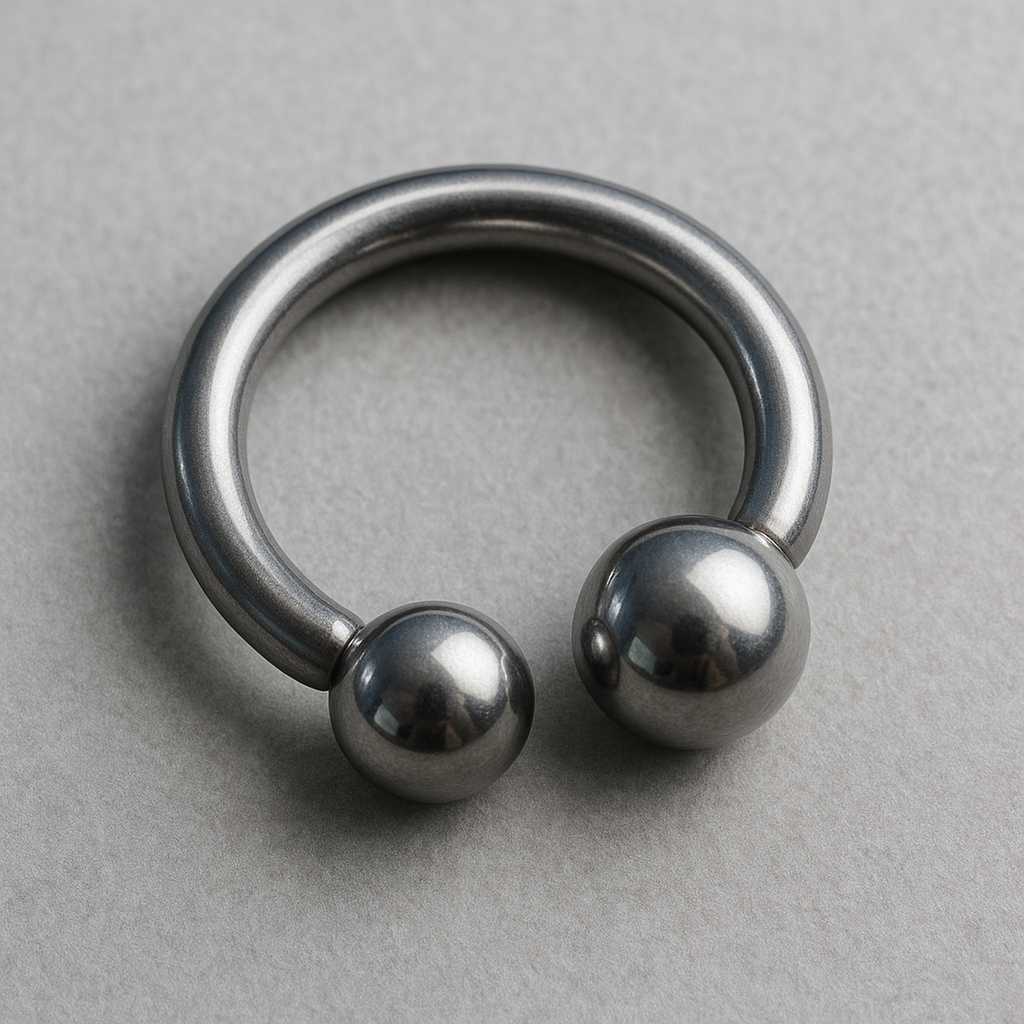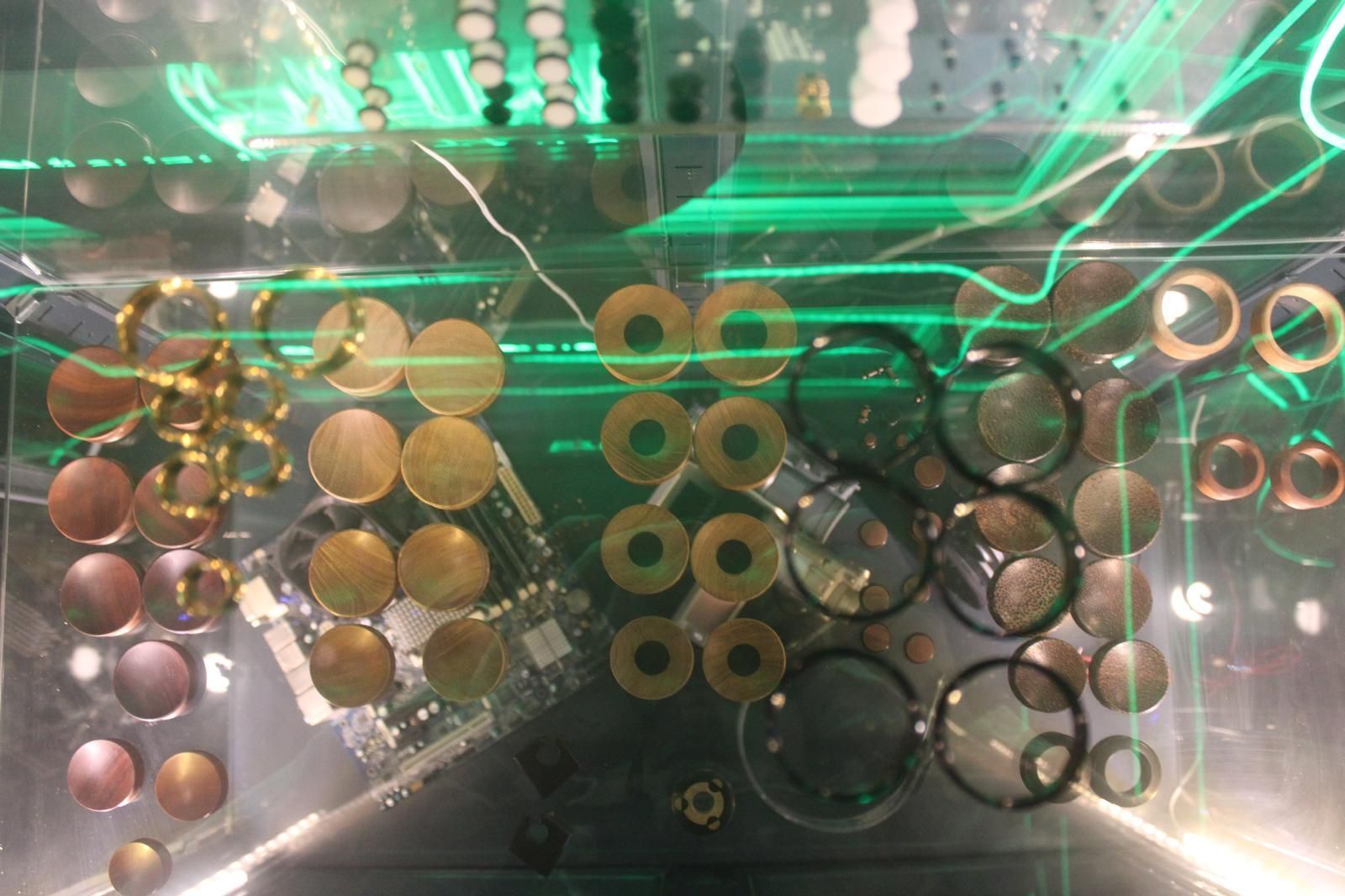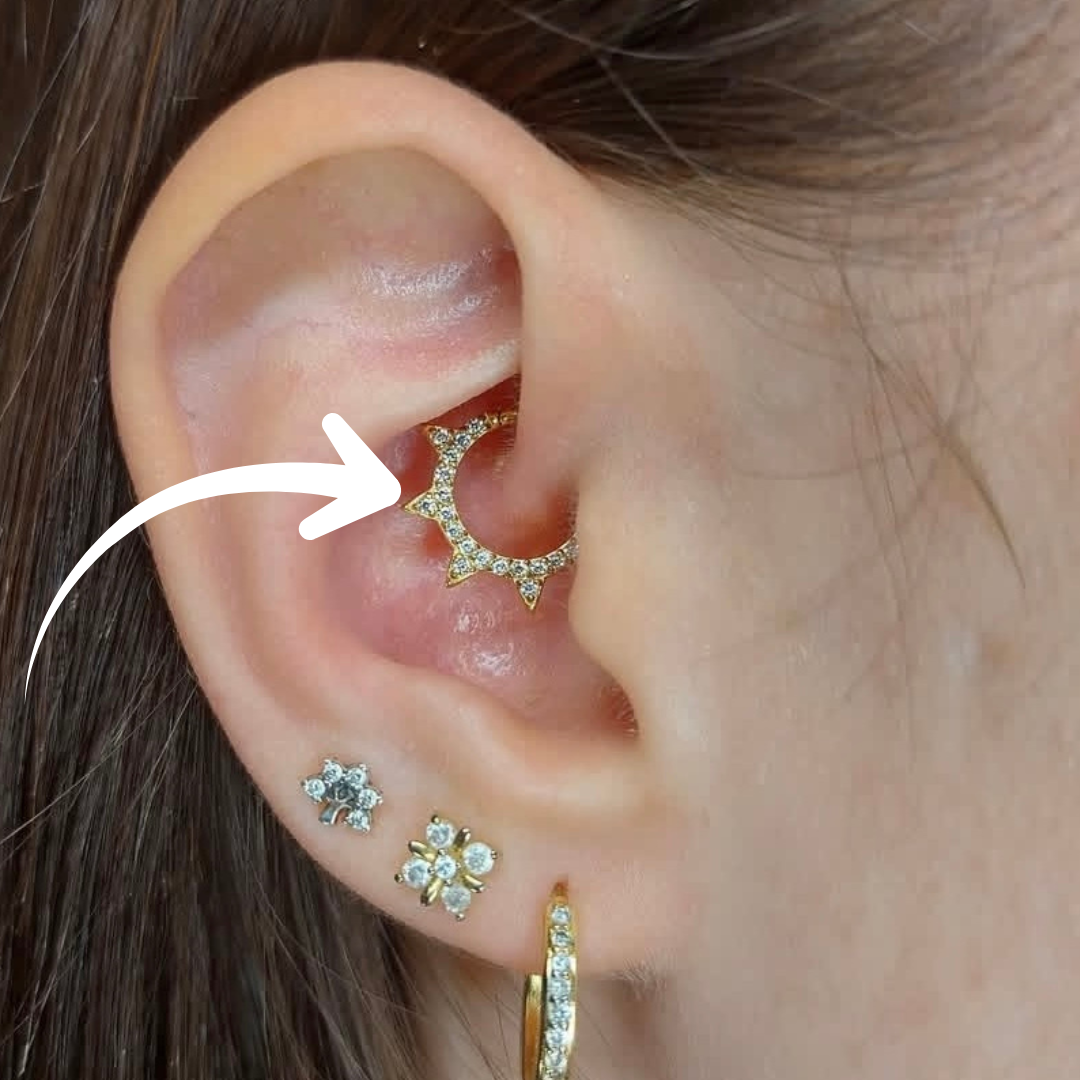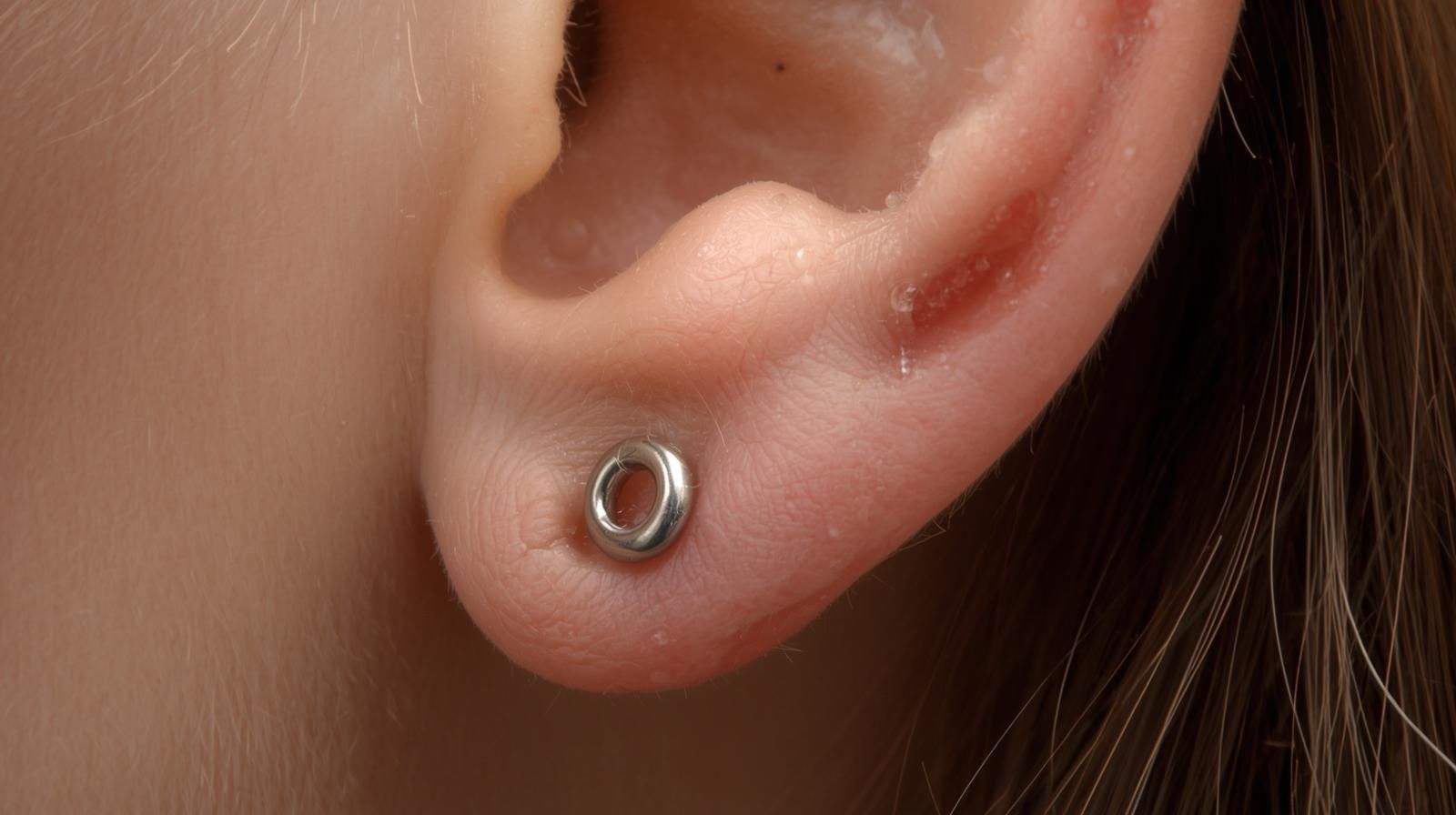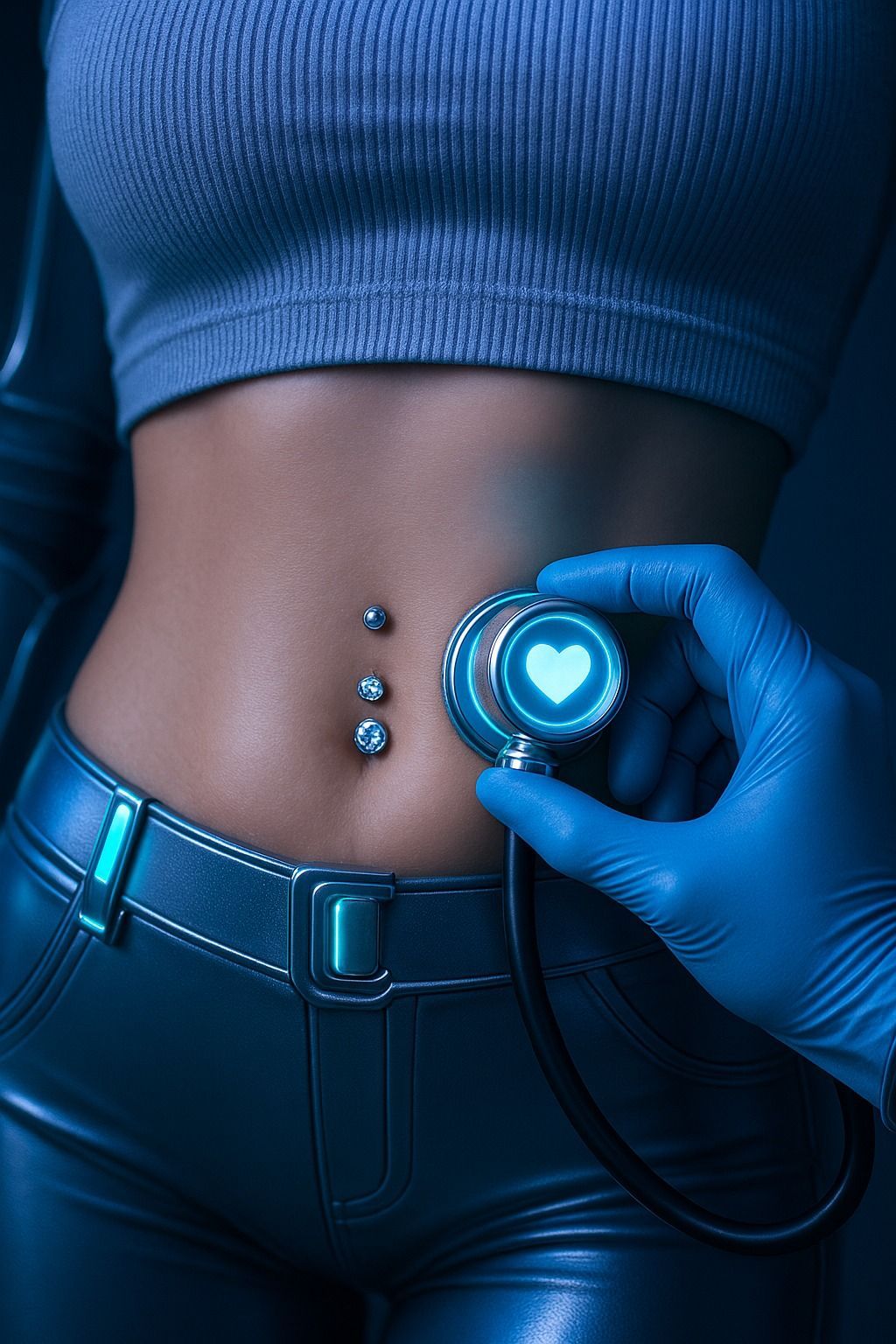The Importance of Proper Piercing Aftercare
Every piercing is a transformative journey, altering both the aesthetics and physiology of your body. At Impulse BioWorks, we impress upon our clients that the healing process is as critical as the piercing procedure itself. The significance of aftercare cannot be overstated; it is not merely about preserving the visual allure of your piercing but about safeguarding your health. Consider the case of Jenna, a client who neglected proper aftercare after her cartilage piercing. She experienced prolonged healing, resulting in complications that required medical intervention. Such scenarios underscore that inadequate care can lead to infections, extended healing times, or even the necessity for removal, which might leave unwanted scars.
This is why we stress proper aftercare protocols: they are your first line of defence in preventing complications. By adhering to recommended practices, you not only ensure your piercing remains a beautiful addition to your body but also protect yourself from potential health risks. The journey of body modification is holistic, and aftercare is a pivotal chapter in this narrative.
Cleaning Solutions: The Right Choice
In the past, DIY sea salt solutions were the go-to for piercing aftercare. However, as the field of body modification has evolved, so too have the recommendations for aftercare. The Association of Professional Piercers (APP) now advises against homemade solutions due to the risk of creating a mixture that is too harsh, potentially leading to over-drying and hindering the healing process. Instead, we advocate for the use of sterile saline solutions specifically labelled as wound washes. These solutions typically contain 0.9% sodium chloride, sometimes paired with purified water, to ensure they are gentle yet effective.
Consider a scenario where a client named Tom decided to use a contact lens saline solution for his new lip piercing. The additional preservatives and chemicals intended for eye use ended up irritating his piercing, prolonging the healing process. This illustrates why it is crucial to avoid any products not explicitly designed for wound care, including those with added moisturisers or antibacterials, as well as solutions meant for nasal or contact lens use.
How to Clean Your Piercing
Step-by-Step Cleaning Guide
- Wash Your Hands: The importance of hand hygiene cannot be overstated. Before touching your piercing, cleanse your hands thoroughly with soap and water. This simple step is vital in preventing the introduction of bacteria, which can lead to infections. Reflect on the experience of Lily, a client who disregarded this step and developed an infection that delayed her healing by several weeks.
- Spray with Sterile Saline: Gently spray the wound wash onto your piercing. It’s unnecessary to move or rotate the jewellery, as doing so might irritate the area. The process should be gentle, akin to nurturing a delicate plant that requires careful watering without disturbance.
- Dry the Area: Use clean, disposable products like gauze or cotton swabs to softly remove any crusty debris. Avoid cloth towels, as they can harbour bacteria and snag on the jewellery, much like a loose thread catching on a rough surface, potentially causing disruption to the healing tissue.
- Frequency: During the initial healing phase, clean your piercing twice daily. Over time, you may adjust this frequency based on the advice of your piercer, as each individual's healing process is unique.
Understanding the Healing Process
Initial Healing Phase
The initial days post-piercing are crucial. Expect some bleeding, localised swelling, tenderness, and bruising. These are natural responses of your body as it begins the healing process. As time progresses, you might notice discolouration, itching, and the secretion of a whitish-yellow fluid that forms crusts around your jewellery. These signs indicate that your body is working to heal the wound.
Complete Healing
A piercing may look healed externally while remaining fragile internally. This is due to the nature of wound healing, which progresses from the outside to the inside. A client named Sarah once prematurely removed her jewellery, thinking the piercing was healed, only to find it quickly closed up, necessitating a re-piercing. Continued care is necessary, even if the piercing appears stable externally.
Long-term Maintenance
Once healed, it is vital to integrate piercing care into your regular hygiene routine to prevent the accumulation of secretions. Remember, piercings can shrink or close rapidly—sometimes in mere minutes. Keep jewellery in place unless a professional advises otherwise. This is akin to maintaining a garden; regular attention ensures it remains healthy and vibrant, preventing the overgrowth of weeds.
What to Do and What to Avoid
What To Do
- Hand Hygiene: Always wash your hands before touching the piercing, creating a barrier against potential infections.
- Protect During Exercise: Physical activities are encouraged, but take precautions to avoid jostling the piercing. Consider the experience of Mark, an avid runner, who used protective gear to shield his navel piercing during workouts.
- Clean Environment: Regularly change bedding and wear breathable clothing that protects without irritating the piercing.
- Shower Safety: Opt for showers over baths, as bathtubs can harbour bacteria. If a bath is necessary, ensure the tub is cleaned thoroughly beforehand.
What To Avoid
- Harsh Cleaning Products: Avoid alcohol, hydrogen peroxide, and antibacterial soaps, which can harm cells and delay healing.
- Excessive Cleaning: Over-cleaning can irritate the site, prolonging healing times.
- Physical Trauma: Steer clear of friction from tight clothing and excessive motion of the area.
- Submersion in Water: Refrain from submerging the piercing in lakes, pools, or hot tubs. Use waterproof dressings if necessary to prevent exposure to potentially harmful bacteria.
Jewellery Considerations
Jewellery Management
- Initial Jewellery: Resist the urge to change the initial jewellery unless absolutely necessary. Consult a qualified piercer for resizing or style changes to avoid complications.
- Continuous Wear: Keep jewellery in place to prevent the piercing from closing. If removal is necessary, consult with your piercer for alternatives, ensuring the integrity of the piercing.
- Threaded Ends: Regularly check that threaded ends are secure to prevent accidental loss, much like ensuring the bolts on machinery are tight to avoid malfunction.
Material Matters
Selecting the right material for your jewellery is crucial in preventing allergic reactions and promoting healing. High-quality options such as titanium, niobium, and surgical steel are recommended for their biocompatibility and resistance to corrosion. Gold, while aesthetically pleasing, should be of high purity to avoid irritation from alloys. Be mindful of nickel content, as it is a common allergen.
Aftercare for Specific Piercing Areas
Navel
To protect from irritation, use a hard, vented eye patch secured with a bandage. Avoid adhesive tape directly on the skin, as it can cause adverse reactions.
Ear/Ear Cartilage and Facial
Utilise clean pillowcases, rotating them regularly. Protect surfaces that come into contact with the area, such as phones and spectacles, by disinfecting them frequently. This is similar to maintaining the cleanliness of tools in a workshop to ensure optimal function.
Nipples
A tight cotton shirt or sports bra can provide comfort and protection during the healing period, acting as a soft shield against external elements.
Genital Piercings
Maintain stringent hygiene and use protection during sexual activity. Gentle care is paramount during the healing process to prevent complications.
Surface Anchors
Continuous maintenance is essential due to potential build-up beneath the threaded top. Saline rinses are beneficial and can be compared to regular oil changes in a car, ensuring smooth operation.
Alternative Aftercare Methods
Piercing aftercare is an evolving field, influenced by regional differences and product availability. If sterile saline isn't accessible, focus on thorough rinsing during showers, much like ensuring a thorough rinse cycle in industrial cleaning processes. Always consult your piercer for regional advice and product recommendations, as they can offer tailored solutions based on local resources.
Embracing Innovations
Emerging technologies and products are continually reshaping aftercare practices. From advanced hydrogel dressings that maintain a moist healing environment to ion-infused solutions that promote cell regeneration, staying informed about new developments can enhance your aftercare experience. Engage in dialogues with your piercer about the latest advancements, ensuring you utilise the most effective methods.
FAQs
How long does healing take?
Healing times vary based on the type of piercing and individual factors. Consult with your piercer for a timeline tailored to your situation, much like a project manager developing a timeline based on specific project needs.
Can I change my jewellery during healing?
It's best to wait until the piercing is fully healed. If adjustments are necessary, seek assistance from a professional piercer to avoid complications.
What should I do if I suspect an infection?
Consult with a healthcare professional immediately. Do not remove the jewellery unless advised, as this can trap infection inside, much like sealing a container without addressing the contents.
Are there any signs I should be concerned about?
Common signs of concern include excessive redness, swelling, pain, or discharge that is green or foul-smelling. Promptly consult a professional if any of these symptoms arise.
Actionable Checklists
Daily Care Checklist
- Wash hands before touching the piercing.
- Clean the piercing with sterile saline twice daily.
- Dry with disposable products.
- Check jewellery ends for tightness.
Weekly Care Checklist
- Change and wash bedding.
- Disinfect items that contact the piercing.
- Assess for signs of irritation or infection.
Monthly Review
- Consult with your piercer for a progress assessment.
- Re-evaluate aftercare products and adjust as needed.
- Refresh knowledge on best practices.
Conclusion and Call to Action
At Impulse BioWorks, we are dedicated to ensuring your piercing journey is both satisfying and safe. Our expert team is here to guide you through each step, from initial consultation to aftercare advice. Should you have any questions or require personalised advice, do not hesitate to visit us or reach out for a consultation.
Trust your piercing journey to the professionals who understand the science and art of body modification. Book your next appointment at Impulse BioWorks and experience the highest standard of care in Dublin's Temple Bar. Your body deserves nothing less than excellence.


